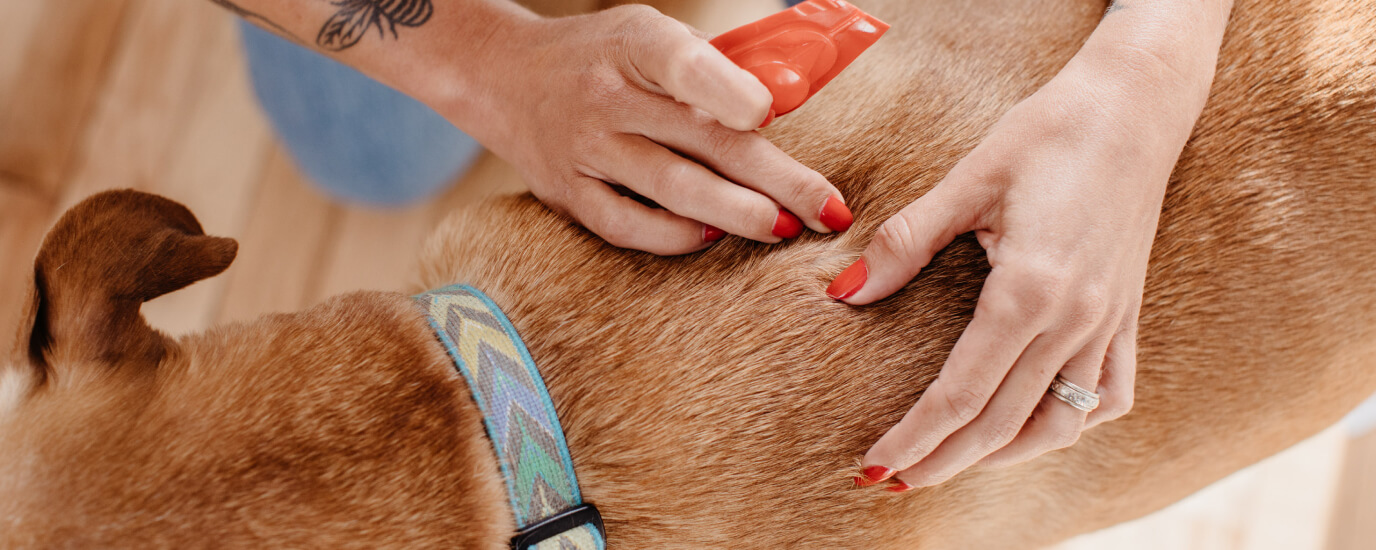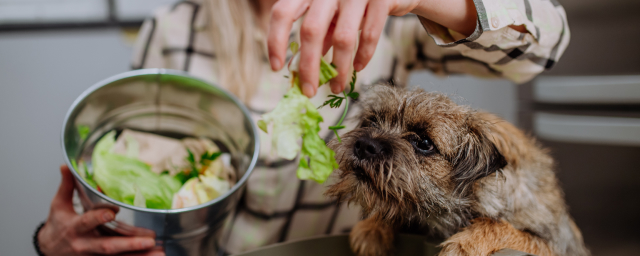
What Kills Fleas Instantly on Dogs: Types of Flea Treatments
Fleas are annoying and stressful. They can irritate pets with flea allergies, transmit disease, and cause a host of other problems for your pets.
On top of that, finding fleas on dogs naturally makes us feel dirty and discouraged. But don't worry, fleas are a common problem among pet owners. With the right approach, you can deal with fleas.
Many pet parents take a wait-and-see approach to flea control, treating only if they notice itchiness or fleas. But, if you have an active flea problem you need to know what kills fleas on dogs instantly and for good.
Keep reading to find out:
- What kills fleas on dogs instantly
- Types of flea treatments
- How to find the most effective flea treatments

What kills fleas instantly on dogs
The safest and most commonly used product to kill fleas instantly on dogs is Nitenpyram — an oral fast-acting tablet commonly known as Capstar®. Once administered it will kill fleas within 30 minutes and lasts up to 48 hours.
You can also bathe your dog in hot soapy water with Dawn to kill adult fleas, but this is not a good long-term solution.
What is Nitenpyram
The closest pet owners can get to immediate flea relief is by treating their pets with Nitenpyram. Common brands of Nitenpyram include Capstar® and Bestguard® which can be purchased through a veterinarian, online, and over the counter.
The active ingredient, Nitenpyram, is an insecticide that starts killing fleas within 30 minutes and lasts for up to 48 hours.
VET TIP
Nitenpyram kills fleas on dogs quickly. But, be sure to pair it with a complementary preventative product to kill fleas at every life cycle stage (i.e., flea eggs, pupae, and larvae).
Does Dawn dish soap kill fleas on dogs
Many articles tout the effects of Dawn in getting rid of fleas. Giving your dog a bath with dish soap can help get rid of adult fleas from your dog's coat. But, there are some precautions to be aware of with Dawn.
- If you've treated your dog with a topical flea and tick treatment, Dawn will remove the solution and strip the oil in your dog's skin that allows the treatment to spread and work.
- If you have an active flea problem, bathing your dog will only remove flea dirt, flea eggs, and adult fleas on your dog. You will also need to treat your home.
Types of flea treatments for dogs
There's a lot of misinformation about flea and tick treatments for dogs. You may have heard about diatomaceous earth, dish soap, flea collars, and prescription medications. So where do you start? Here are a few options to consider:
Over-the-counter flea treatments
Topical flea treatments have been around for nearly 30 years. After shampoos, powders, and sprays lost momentum, pet parents longed for a more effective solution. Topicals are applied to your dog’s skin and fur coat to repel and kill fleas and ticks on dogs.
There are lots of over-the-counter (OTC) flea treatments available for dogs. However, not all solutions are 100% effective. Most of these solutions will kill adult-stage fleas in 24-48 hours. But, there are some caveats for each type.
Topical flea treatment
Topical treatments are applied directly to your dog’s skin starting at their shoulder blades. The topical solution works to spread throughout your dog's coat via hair follicles and natural oil in their skin.
The best topical flea treatment for dogs is one that both kills fleas and repels all flea life cycle stages. Some examples of topical flea treatments include:
- Squeeze or spot-on treatment*
- Flea shampoo
- Flea combs*
*Invest in a flea comb to help you part your dog's coat to apply topical flea treatments. Flea combs are also great when searching for fleas.
VET TIP:
Wags Advance® for Dogs will kill adult fleas in as little as two hours after application. This topical product contains ingredients that attack the flea’s nervous system which helps kill individual adult fleas and stop reproduction to prevent a future flea infestation.

Wearable flea treatments
Wearable flea treatments are a less messy alternative to topical solutions. Unfortunately, they aren’t as effective as other topical flea and tick treatments.
One common example is a flea and tick collar. Your dog wears the collar around their neck, so their hind legs and tail may be less protected. Be sure to consult with your veterinarian when using flea collars and closely follow the instructions provided.
Prescription flea medication
Not long after topicals were introduced, oral flea medications made their way to veterinarians and pet stores everywhere. Because they were often paired with a heartworm preventative and given orally, they usually require a prescription from your vet.
Insect development inhibitors (IDI)
One prescription oral medication is an IDI. These ingredients release slowly into your pet’s bloodstream over a few weeks. After a female flea bites your pet, she ingests the IDI. This stops the reproduction of future fleas.
But, there are two big cons to these types of treatments:
- IDI’s are ineffective at killing adult fleas so you’ll need to add another treatment.
- Oral treatments need a flea bite to work which can lead to infection.
Keep in mind, every product works differently. What kills fleas on contact with one dog may not work for another. Talk to your vet about what treatment they recommend for your specific dog.
Natural flea treatment
Natural remedies to get rid of fleas are convenient options for pet parents. This is because essential oils and salt are often found in your cupboards.
Many pet parents are uncomfortable giving their dogs chemicals and may opt for home remedies. But unfortunately, treating your dog with apple cider vinegar or coconut oil may actually cause more harm than good.
Home remedies are usually found in your home. So, they may help solve your immediate problem. But, these solutions aren’t effective at preventing fleas on dogs naturally.
Keep in mind, just because they are natural doesn't mean they are safe. In fact, they could be toxic to your pet. Some popular natural remedies to get rid of fleas include:
Apple cider vinegar
One theory about fleas is that they don't like the smell or taste of apple cider vinegar. So, many pet parents use a water-diluted concoction as a flea spray on their pets to repel fleas. However, this isn't 100% effective at warding off fleas and doesn't kill fleas on dogs instantly.
Baking soda and salt
A mixture of water, baking soda, and salt is touted as an effective way to remove fleas. Pet parents apply the paste to their pet, allow it to sit for several hours, and then vacuum it off.
Like other natural solutions, this isn't a dependable way to kill fleas and won't prevent them from infecting your pet in the first place.
Coconut oil
Coconut oil is often used to improve the skin and coat. But, it can also be used to smother and repel fleas.
Applying coconut oil (outdoors) to your dog's skin will cover and suffocate the flea. But, it can be difficult to maintain and isn't very convenient when you need a quick solution.
Diatomaceous earth
Diatomaceous earth works by sprinkling the powder throughout your home and using a vacuum to clean it (and the fleas) up. But, pet parents often apply it incorrectly or use it too much. It should not be applied to pets directly. Plus, inhalation can cause lung damage.
Essential oils
Some essential oils are naturally repelling. Spraying a mixture of warm water and oil on your pet's coat is common. But, many pets are allergic to these essential oils so it could cause other problems for your pet:
- Citronella oil
- Eucalyptus oil
- Peppermint oil
- Sage tea oil
- Tea tree oil
Garlic
Garlic is a natural remedy that is fed to pets to repel bugs because of its sulfuric quality. But, garlic is hard to dose correctly and can be toxic to your dog.
Regular baths
In addition to these items, bathing your pet with shampoo may seem like it's helping you get rid of fleas. But, a mixture of bath water and shampoo usually only kills adult fleas. Even professional grooming won't solve your problem if you aren't treating the environment.
VET TIP:
If you find a few home remedies you'd like to try, be sure to talk to your veterinarian first. They can determine if natural flea remedies are right for your pet.

How to find the most effective flea treatment
Now that you know the different types of treatments available, how do you pick the right product for your pet? No matter what you choose, the best way to get rid of fleas on dogs is through continuous prevention.
Here’s what you should know to effectively kill and prevent fleas:
1. Make sure they have key active ingredients.
First, find a medication that will kill fleas safely and effectively. Flea medications can have side effects, and not every product is appropriate for keeping every pet healthy. The most effective flea treatment for dogs includes active ingredients that kill and repel fleas and ticks.
Active ingredients in common flea and tick medications
Kills fleas (all flea life stages) |
Kills ticks |
Kills mosquitoes |
Kills flea eggs & larvae |
Repels pests |
Safe for cats |
|
|---|---|---|---|---|---|---|
| Fipronil |  |
 |
 |
|||
| Permethrin |  |
 |
 |
 |
 |
|
| Imidacloprid |  |
 |
||||
| Nitenpyram |  |
 |
||||
| Methoprene |  |
 |
||||
| Pyriproxyfen |  |
 |
2. Look for flea treatments that last.
Dealing with a flea infestation can feel overwhelming, but it is possible to get rid of fleas for good. From natural remedies like coconut oil to using a flea collar or shampoo — there are a lot of options to choose from.
Any brand that has a money-back guarantee for flea removal should be evaluated with caution. There isn't a quick solution for taking care of flea eggs, dirt, and more on your dog. But, most preventative treatments last about 30 days.
3. Be consistent about your treatment.
It’s far easier to keep fleas away than it is to clean them up. If your pets are unprotected it may cost you more in the long run.
The cost of an active flea infestation:
- Additional doses of topical treatment: $8 - $24
- Nitenpyram oral treatment: $20 - $45
- Helpful tools (flea comb) - $5 - $10
- Household spray (IGR): $20 - $40
- Veterinarian visits for flea allergy dermatitis (FAD): $50 - $400
- Treatment for Lyme disease: $500+
The expenses associated with leaving your dog unprotected can really add up. That’s why year-round prevention is your best strategy.
4. Find one that works for your dog.
Above all else, the health of your dog is most important. Before using anything to kill fleas, make sure it is safe for your individual dog's needs.
The best treatment to kill fleas on dogs will depend on:
- Your dog's breed
- Your pet's age
- Their weight (large dogs vs. small)
- Any health issues
- Pregnancy status
5. Choose a treatment that's easy to apply.
Realistically, the best treatment is one that you'll remember every single month. When searching for a solution, find one that can be easily applied and potentially shipped to your door every month right on time.
Also, consider investing in a flea comb to help with the application. A fine-toothed comb is great for parting your dog's coat when using a topical treatment.
6. Protect every pet in your home.
Ridding all pets completely of fleas and ticks takes patience and persistence. Every time you apply flea treatment, be sure to follow the instructions for each pet’s weight class. Also, be sure to treat every dog and cat in your household. If other pets are unprotected they may reinfect the others.
7. Treat your home in addition to your dog.
Just because you have fleas, doesn't reflect the cleanliness of your house. But, the best way to avoid fleas from coming back is to clean up their environment.
After applying treatment, vacuum every area your dog spends time in. This can help you get rid of 30-90% of flea eggs. Discard the contents of the vacuum outside.
Next, wash all bedding and soft toys in soapy, warm water and wipe down hard surfaces. In difficult cases, a household spray with an IGR may be useful. They can help treat flea reproduction at the source.
Pet owners know finding fleas on your dog isn't fun. But, flea prevention is essential to your pet's health and flea freedom. Soon you will once again have a flea-free environment and happy, healthy, itch-free dogs.



